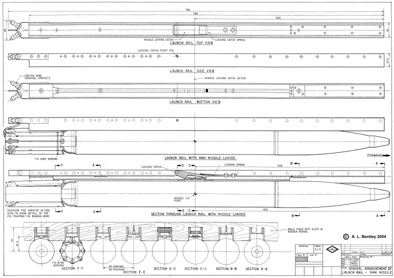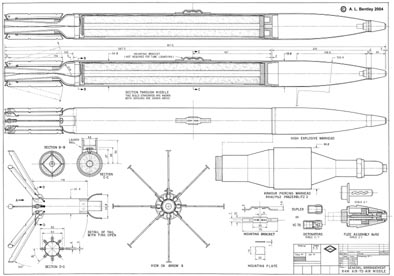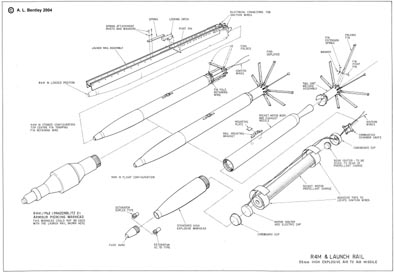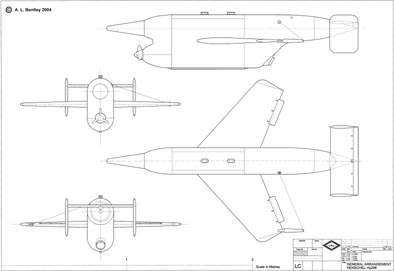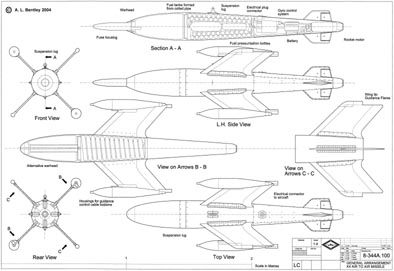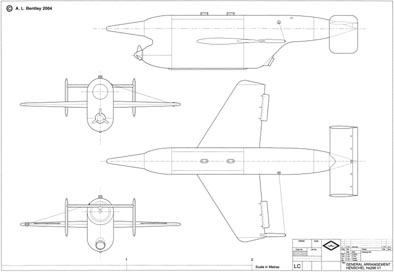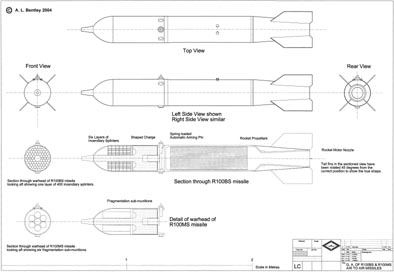The R4M (German: Rakete, 4Kilogramm, Minenkopf) rocket, nicknamed the ‘Hurricane’ (German: Orkan) due to its distinctive smoke trail when fired, was an anti-aircraft rocket. It was developed by the German Luftwaffe during World War II.
The R4M was developed in order to deal with the increasing weight of anti-bomber weapons being deployed by Luftwaffe fighters.
The anti-aircraft version of the R4M used a large warhead of 55 mm. with 520 g. (17.6 ounces) of Hexogen explosive charge, nearly guaranteeing a kill with one hit.
Each R4M weighed 3.2 kg and was provided with enough fuel to be fired from 1000 m., outside the range of the bomber’s defensive guns. The main body of the rocket consisted of a simple steel tube with eight base-hinged flip-out fins on the tail for stabilisation, deployed immediately after launch. A battery typically consisted of two groups of 12 rockets and when all 24 were fired at once they would fill an area about 15 by 30 m. at 1000 m., a density that made it almost certain that the target would be hit.
The R4Ms were usually fired in four salvos of six missiles at intervals of 0.07 seconds from a range of 600 m, and would streak towards their target at a sixty percent higher velocity than the Wfr. Gr. 21’s rockets would (the BR 21’s projectile traveled at some 715 mph post-launch), as the R4M typically had a flight speed of roughly 1,890 km/h (1,175 mph). Two warheads were available for the R4M, the common PB-3 with a 0.4 kg charge for anti-aircraft use and the larger shaped charge, similar in construction to the Panzerschreck, the Panzerblitz II/III (PB-2/3), for anti-tank use. The Panzerblitz III, mounting a gigantic 210 mm. hollow charge warhead (the same calibre as the BR 21), can be seen as the ultimate development of the basic Orkan rocket. It was intended to be carried (six or eight rockets per plane) by the tank-busting B model of the Henschel Hs 132 jet dive-bomber – however, neither the missile nor the warplane it was exclusively intended for got beyond the prototype stage before the end of the war.
Only a small number of aircraft were fitted with the R4M, mostly Messerschmitt Me 262s and the ground attack version of the Fw 190s, which mounted them on small wooden racks under the wings.

